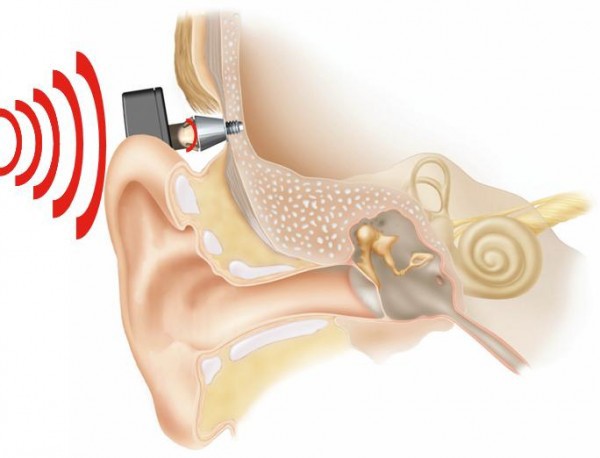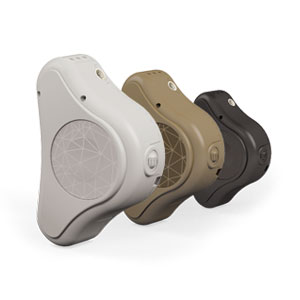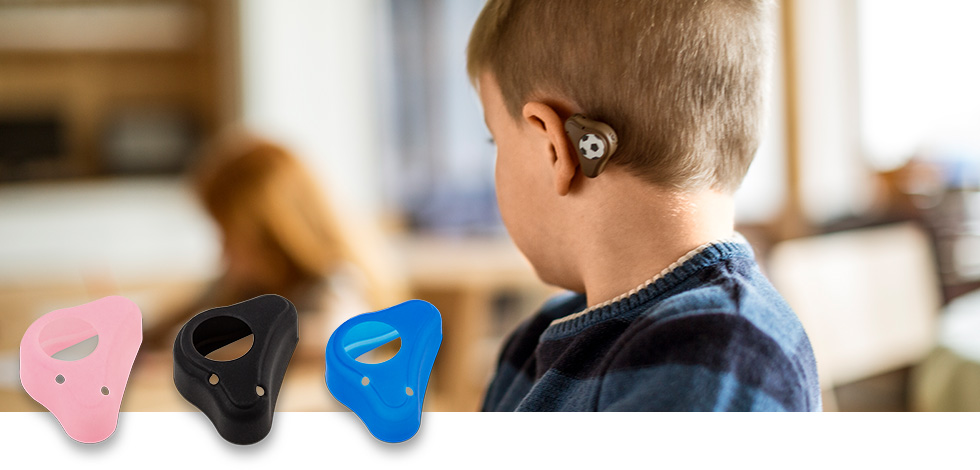ADHEAR - another safe hearing aid based on bone conduction sound
The problem of hearing correction by the bone conduction apparatus has long rested on the need for surgical intervention. However, to date, we already have several developments that exclude operation: one of them is ADHEAR.

There may be less indications for wearing bone conduction apparatuses, but at the same time hearing restoration with them earlier went through several stages: first, it was necessary to implant a titanium implant into the skull, then let it “settle down” for about six months and only then fit it processor amplifier

At the same time, children, for example, could have had their operations not shown, and this affected the quality of sound transmission. Of course, it was possible to use special headphones, but the scope of use of headphones was limited, and this complicated communication with people.
Recently, we wrote that the Oticon company presented its version of a children's apparatus based on bone conduction. However, ADHEAR looks better, and here's why.
Both devices are non-surgical ways to improve hearing, but ADHEAR wins by fastening. Oticon with all convenience is fixed with a special elastic "rim" on the head, and this can (and will) cause inconvenience of a physical and ethical nature. A certain pressure on the skull cannot fail to cause this, and even unnecessary questions cannot be avoided.
ADHEAR is attached with a sticky surface, which is light, invisible and does not exert pressure on the skin and bones of the skull, which was chosen as one of the key advantages.

Next comes the processor, which has the function of intelligent adaptation to the environment, several microphones that provide noise reduction, screening of unnecessary noise and stable feedback!
Plus, what is important and unique at the moment: the developed ADHEAR device has synchronization via Bluetooth, in other words, it will also act as a headset, so now you don’t need an additional device for this purpose!

The only thing that can become some kind of a fly in the ointment is a two-week autonomy, but given the compact size, the gadget will probably be charged quickly. They thought about the children in addition: there are proposals for individualization of the apparatus.

Active bone conduction VS passive bone conduction
Without going into science , one can basely say that passive bone conduction is, of course, safer anyway. Under the devices of passive bone conduction understand devices that do not require any, even the slightest surgical intervention.
Under the active, respectively, the opposite: even a minimally invasive method of implantation may be fraught with irritations, rejections and the inability to carry the device in the future. In fairness, the statistics are low , but the likelihood is not a very comfortable feeling from the point of view of the emotional background and additional attention and care for the implantation site.
Both Oticon and ADHEAD devices are passive devices, similar to headsets with bone conduction sound, but they act as complete hearing aids, and, according to their creators, without any noticeable loss in signal transmission quality, as well as with additional conveniences: ADHEAD It does not squeeze the skin and bones, and also has a Bluetooth sensor.

There may be less indications for wearing bone conduction apparatuses, but at the same time hearing restoration with them earlier went through several stages: first, it was necessary to implant a titanium implant into the skull, then let it “settle down” for about six months and only then fit it processor amplifier

At the same time, children, for example, could have had their operations not shown, and this affected the quality of sound transmission. Of course, it was possible to use special headphones, but the scope of use of headphones was limited, and this complicated communication with people.
Recently, we wrote that the Oticon company presented its version of a children's apparatus based on bone conduction. However, ADHEAR looks better, and here's why.
Both devices are non-surgical ways to improve hearing, but ADHEAR wins by fastening. Oticon with all convenience is fixed with a special elastic "rim" on the head, and this can (and will) cause inconvenience of a physical and ethical nature. A certain pressure on the skull cannot fail to cause this, and even unnecessary questions cannot be avoided.
ADHEAR is attached with a sticky surface, which is light, invisible and does not exert pressure on the skin and bones of the skull, which was chosen as one of the key advantages.

Next comes the processor, which has the function of intelligent adaptation to the environment, several microphones that provide noise reduction, screening of unnecessary noise and stable feedback!
Plus, what is important and unique at the moment: the developed ADHEAR device has synchronization via Bluetooth, in other words, it will also act as a headset, so now you don’t need an additional device for this purpose!

The only thing that can become some kind of a fly in the ointment is a two-week autonomy, but given the compact size, the gadget will probably be charged quickly. They thought about the children in addition: there are proposals for individualization of the apparatus.

Active bone conduction VS passive bone conduction
Without going into science , one can basely say that passive bone conduction is, of course, safer anyway. Under the devices of passive bone conduction understand devices that do not require any, even the slightest surgical intervention.
Under the active, respectively, the opposite: even a minimally invasive method of implantation may be fraught with irritations, rejections and the inability to carry the device in the future. In fairness, the statistics are low , but the likelihood is not a very comfortable feeling from the point of view of the emotional background and additional attention and care for the implantation site.
Both Oticon and ADHEAD devices are passive devices, similar to headsets with bone conduction sound, but they act as complete hearing aids, and, according to their creators, without any noticeable loss in signal transmission quality, as well as with additional conveniences: ADHEAD It does not squeeze the skin and bones, and also has a Bluetooth sensor.
All Articles